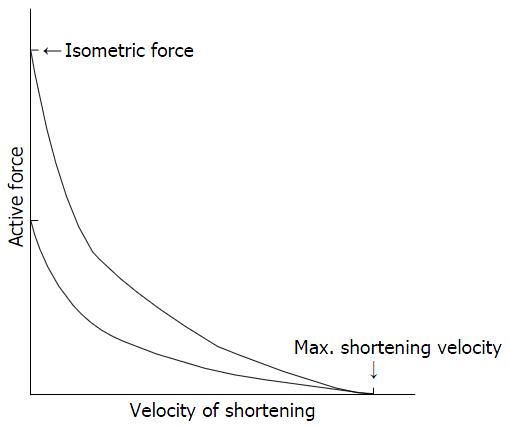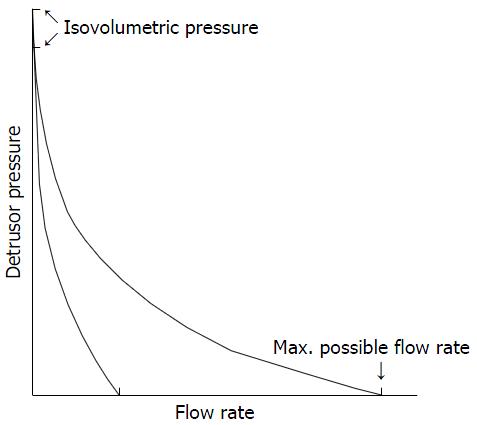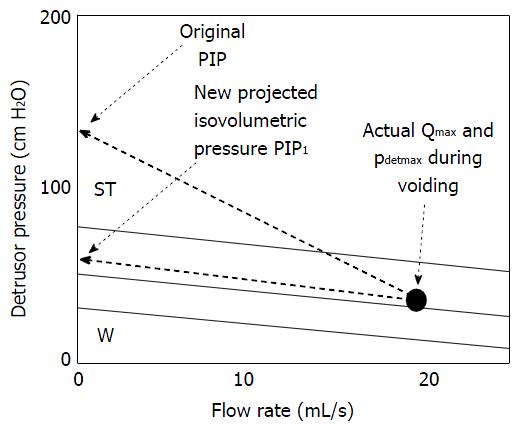Copyright
©The Author(s) 2016.
World J Clin Urol. Mar 24, 2016; 5(1): 29-36
Published online Mar 24, 2016. doi: 10.5410/wjcu.v5.i1.29
Published online Mar 24, 2016. doi: 10.5410/wjcu.v5.i1.29
Figure 1 Hill curves relating active force to velocity of shortening at a given muscle length.
Curves are shown for two different muscle lengths, corresponding to the same bladder when full (upper curve) and when nearly empty (lower curve: Volume approximately 12.5% of capacity). (From Griffiths[8]. Assessment of detrusor contraction strength or contractility. Neurourol Urodyn 1991; 10: 1; with permission).
Figure 2 Bladder output relations relating active detrusor pressure to rate of urine flow at a given bladder volume.
Curves show Bladder output relations for the same two situations as in Figure 1, corresponding to a full bladder (curve with higher maximum possible flow rate) and a nearly empty bladder (lower maximum possible flow rate; volume approximately 12.5% of capacity). (From Griffiths[8]. Assessment of detrusor contraction strength or contractility. Neurourol Urodyn 1991; 10: 1; with permission).
Figure 3 Bladder outlet obstruction nomogram for women.
(From Blaivas et al[24]. Bladder outlet obstruction nomogram for women with lower urinary tract symptomatology. Neurourol Urodyn 2000; 19: 553; with permission).
Figure 4 To determine projected isovolumetric pressure 1 the point representing the pressure and flow rate measured during uninterrupted voiding is projected back to the axis with a line of slope -1 cm H2O/mL per second.
(Note that the value of original PIP would be much larger). For this void, the value of PIP1 is about 60 cm H2O, and the void falls in the band of typical values (unshaded). Values in the regions shaded gray would represent either ST or W contractions than those typical of the subjects in this group. (From Tan et al[30]. Stop test or pressure-flow study? Measuring detrusor contractility in older females. Neurourol Urodyn 2004: 23: 184 with permission). PIP: Projected isovolumetric pressure; ST: Stronger; W: Weaker.
- Citation: Valdevenito JP, Walton-Diaz A. Diagnosis of voiding dysfunction by pressure-flow study in women. World J Clin Urol 2016; 5(1): 29-36
- URL: https://www.wjgnet.com/2219-2816/full/v5/i1/29.htm
- DOI: https://dx.doi.org/10.5410/wjcu.v5.i1.29












